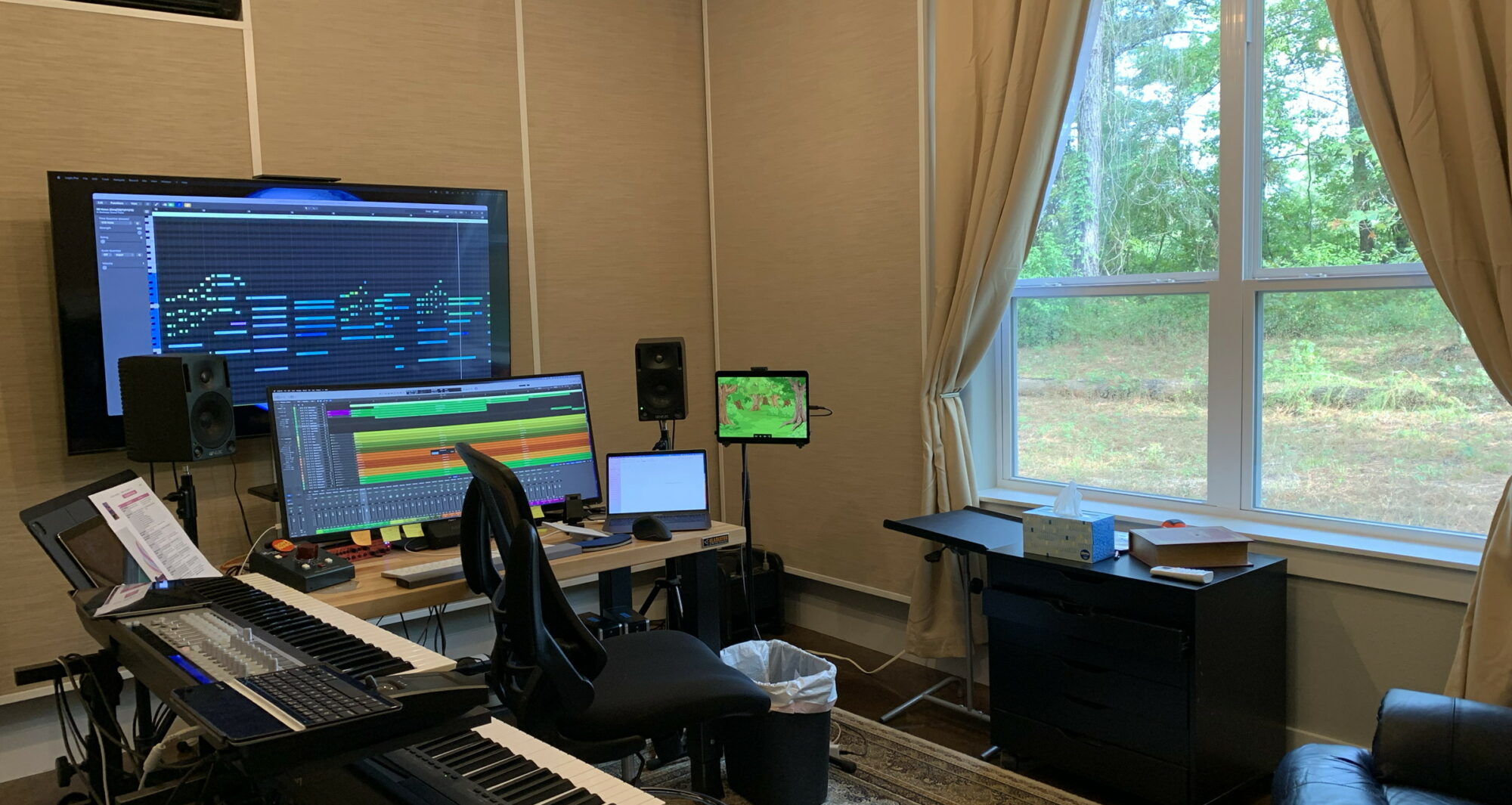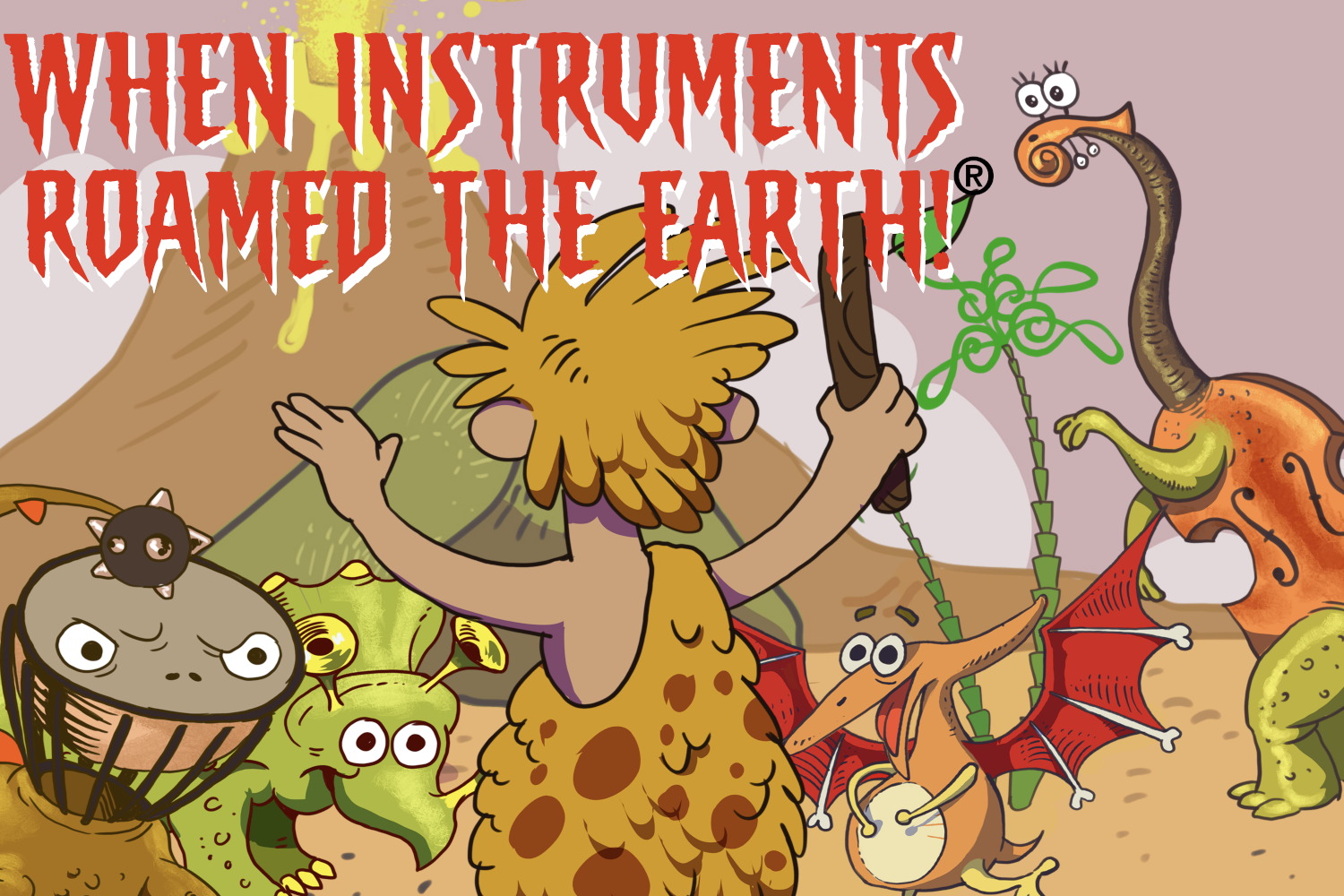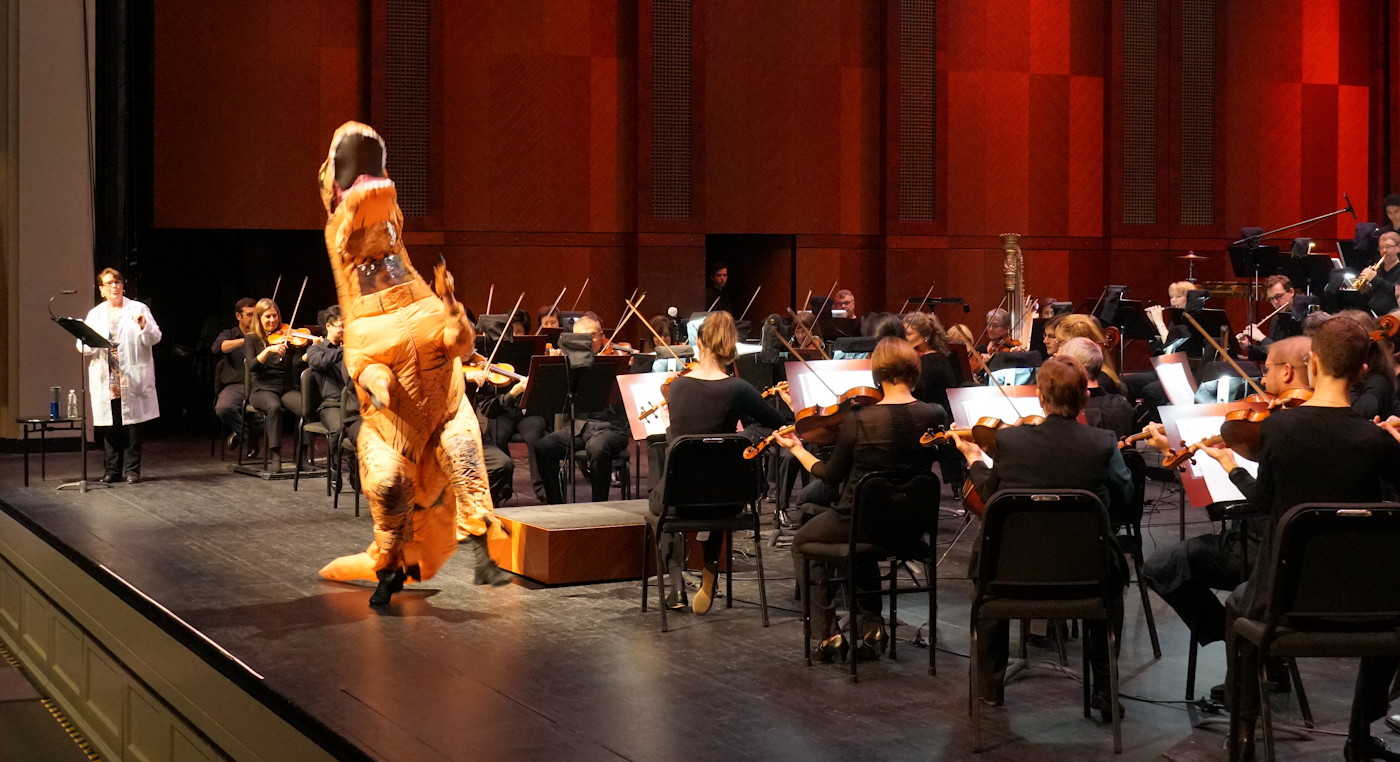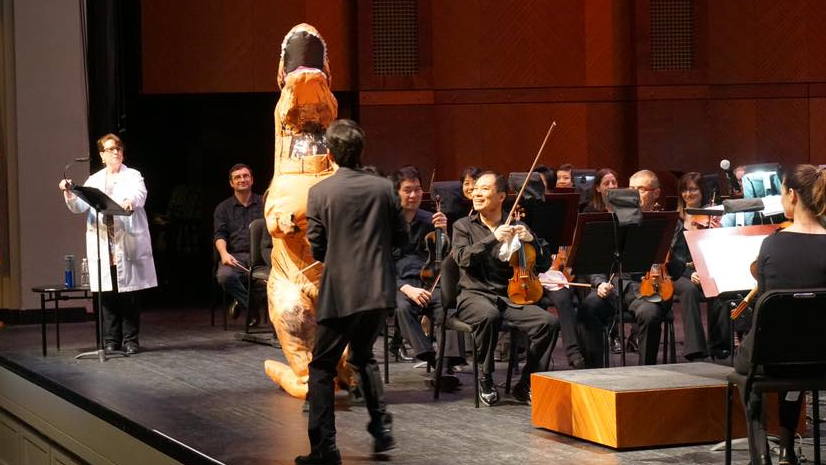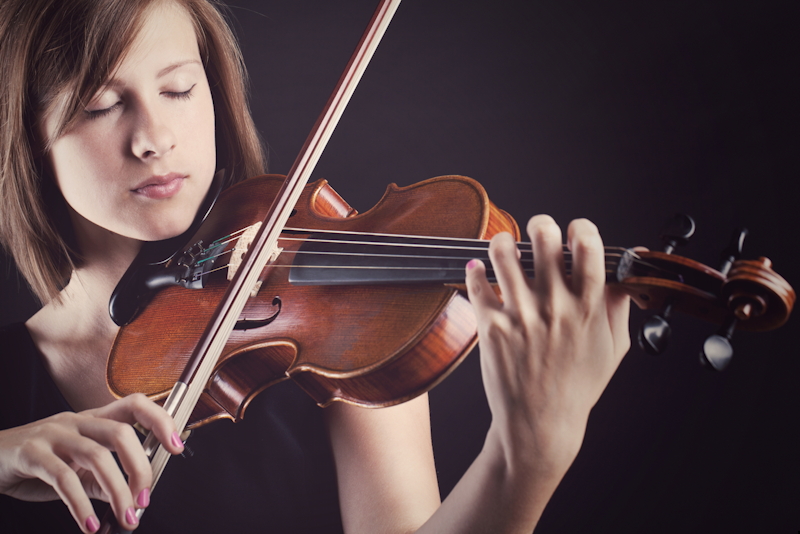Performed June 3, 2023 at the Meyerson Symphony Center, Dallas, Texas
“The Unicorn’s Birthday®” by Bob Singleton – Concert Information Summary
Performance Length: 45 Minutes
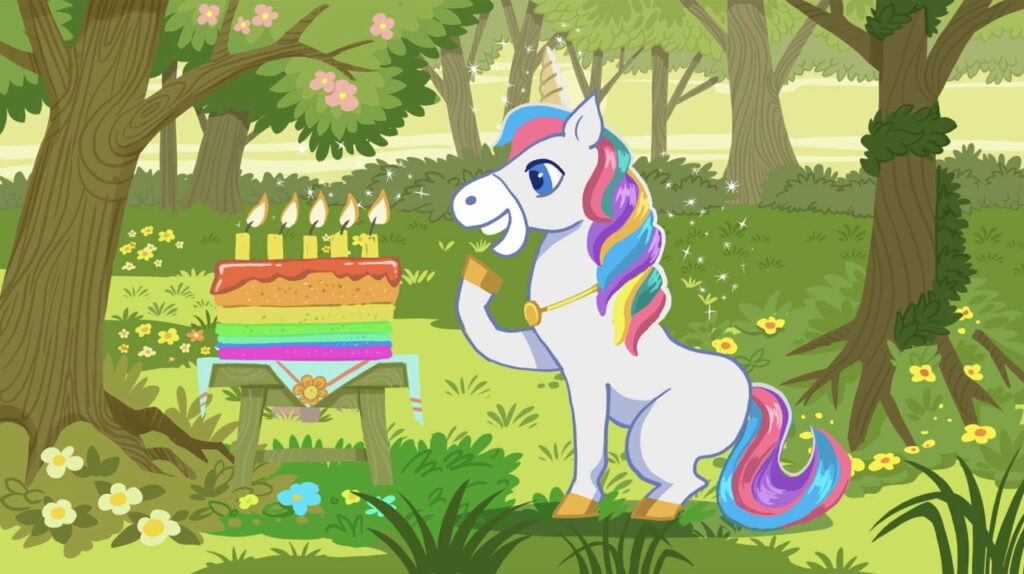
Presented by:
Medium-size double-winds orchestra (see instrumentation below)
Narrator
Inflatable costume character Unicorn (costume available on Amazon)
Special included features:
License allows unlimited performances for entire season
Tiered pricing
Streaming rights for one year
Adorable projection graphics (not required, but helpful)
Brand-able coloring pages for program or lobby activities
Promotional graphics and text
Can be presented as family and/or special needs/sensory-friendly
Delightful on-stage activity by musicians
Gentle audience interactivity
Music & narration never overlap
Three detailed scripts; Narrator, Technical, & Slide Advance
Instrumentation:
2 flutes
1 oboe
1 English Horn
1 Bb clarinet
1 Bb clarinet/bass clarinet
2 bassoons
3 French Horns (with mutes)
3 C trumpets (with straight mutes)
*optional Bb trumpet parts included*
3 trombones (with straight mutes)
3 perc.*
violins 1
violins 2
violas
cellos
contrabass
Note: no piano, harp, tuba, or timpani
*Percussion list:
snare drum (snares on & off)
Tuned percussion: glockenspiel & xylophone
Misc. percussion:
tambourine
wood blocks
finger cymbals
small crash cymbals
small suspended splash cymbal
triangle
ratchet
bell tree
duck call
engraving by Philip Rothman, NYC Music Services
Details, Details! about “When Instruments Roamed the Earth!®”
When Instruments Roamed the Earth!®
a family symphony orchestra concert
© 2021, Singleton Productions, Inc.
concert description
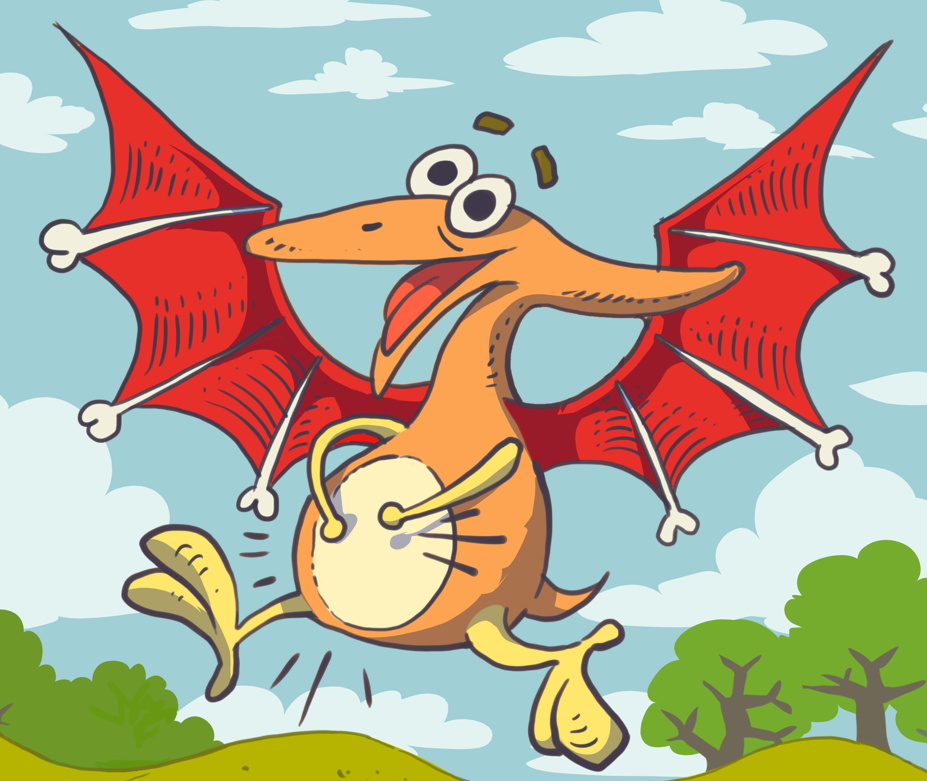
“When Instruments Roamed the Earth!®” is an all-original, multi-media, story with narration. and music event for symphony orchestras.
Just as Looney Tunes introduced a generation to loving classical music, “When Instruments Roamed the Earth!®” takes a new generation on a hilarious journey to love the people, the sound & the experience of the symphony orchestra.
“When Instruments Roamed the Earth!®” is sold as a “season pass,” allowing unlimited performances during a season.
The concert purchase package includes:
- .pdf conductor score, all parts books, narration and technical scripts
- all graphic files for projection during performance
- promotional graphics, video, and text copy for programs, print, and web media
- all rights to present music, story, & graphics in concert and promotions for 1 year
- printed scores and parts available, and are sold, not rented
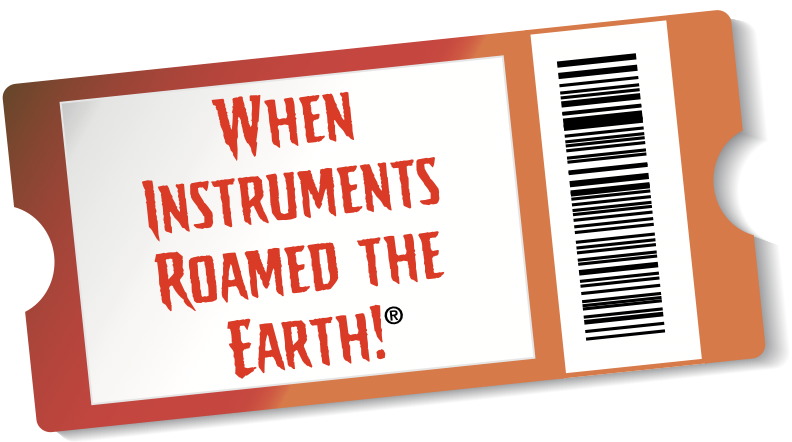
Specifications:
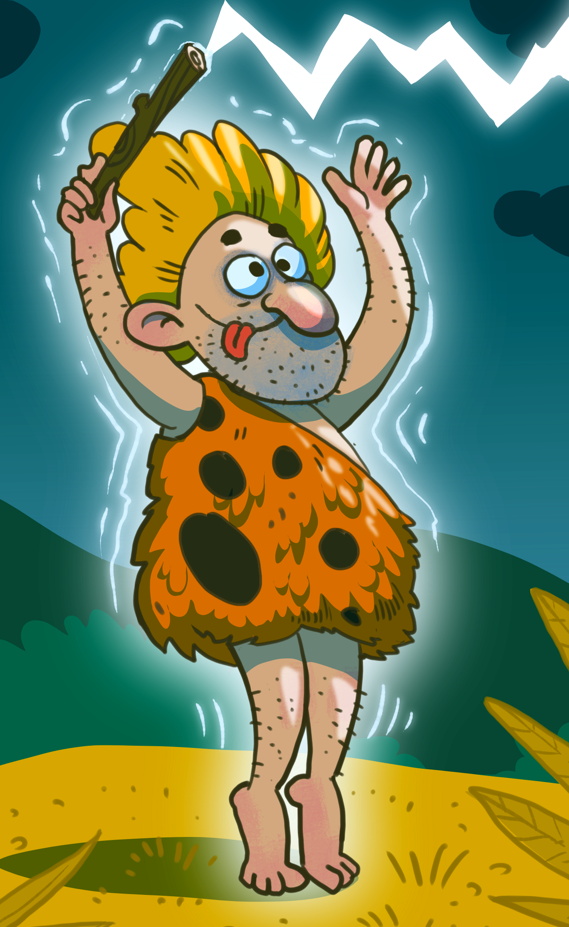
- perform in under 45 minutes
- “double winds” orchestra (plus piccolo-full orchestration listed below)
- all original score, graphics and story
- narration can be delivered by special guest or conductor
- fun & funny music and story for kids and grown-ups
- features orchestra soloists and sections throughout
- one easy rehearsal, many impressive performances
the concert
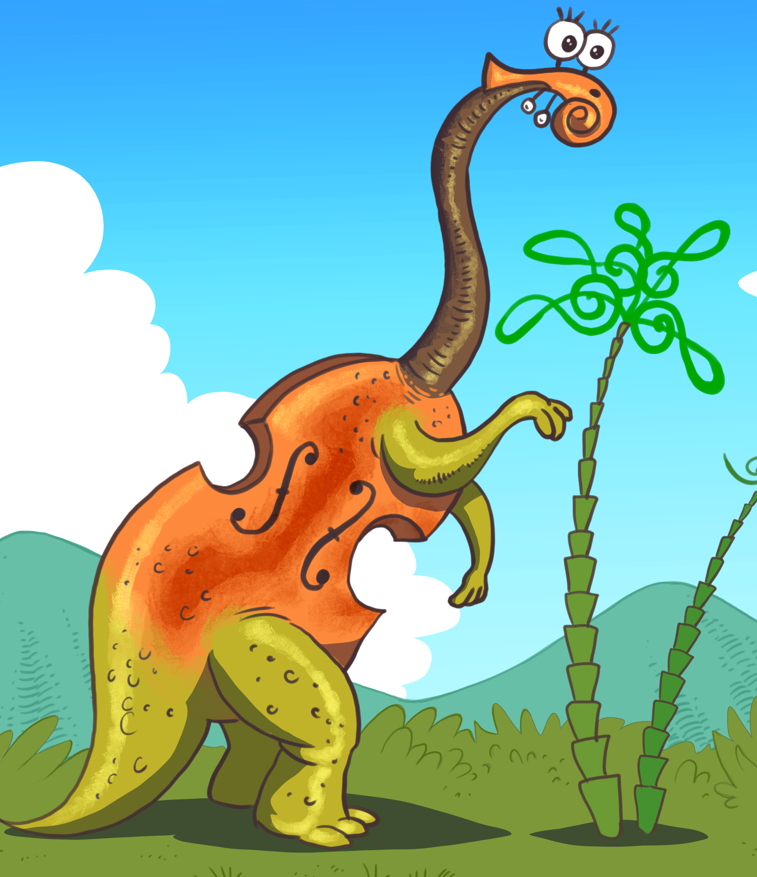
In pre-historic times, strange creatures walked the planet. These were the ancient ancestors of musical instruments that inspired melodious makers in brass and wood to create the instruments we see in the orchestra today.
Take a journey into, “When Instruments Roamed the Earth!®” Filled with laughs, surprises, multi-media projection and on-stage action, any symphony can easily present this perfect all-ages introduction to the exciting sounds, people, and experience of a symphony orchestra concert.
Hear and see the hilarious “research” of paleo-musicologist, Sir Humphrey Treble-Clef, who believes that our modern instruments are actually the descendants of giant, dinosaur-like creatures like you’ve never seen before. These are strange creatures which exist in the hot, mysterious, swampy jungles of Sir Humphrey’s unusual imagination.
Most will not believe a man who tried to prove that ancient humans made music by hitting themselves on the head with rocks; but everyone will smile, laugh, and be in awe of the symphonic interpretations of Sir Humphrey’s wild theories, featuring all the instruments of the symphony orchestra.
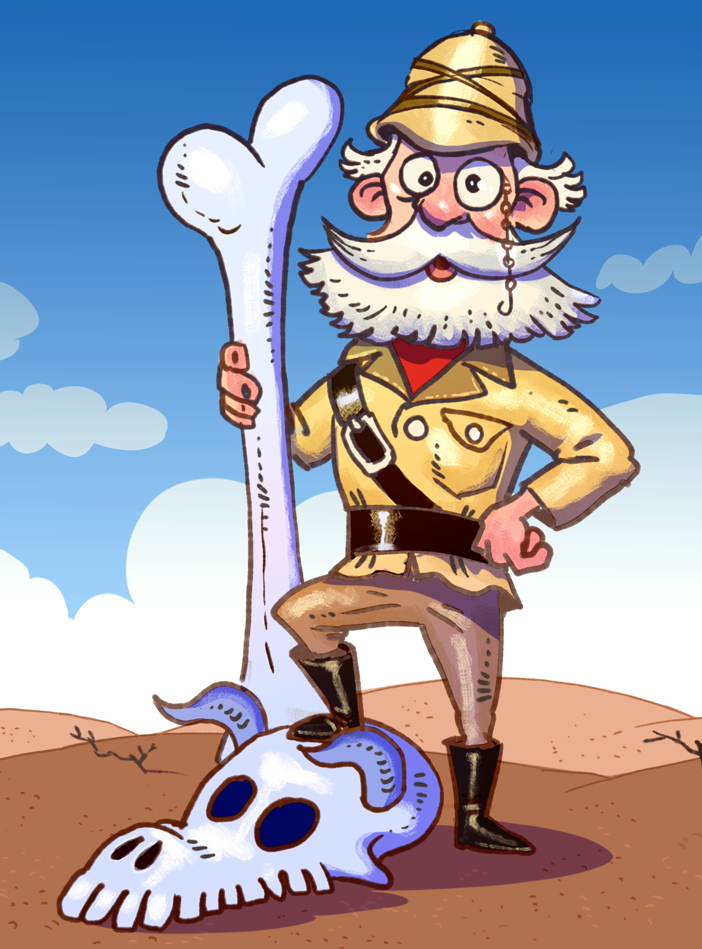
The concert event package includes:
- fun and funny musical sounds and sights
- liberal use of humor and energy
- a showcase of the people, instruments, and dynamics of the symphony orchestra
- a musical/narrative journey that builds to a grand finale, leaving audiences wanting more
- fun, eye-catching original art for projection, programs, print and social media
- fun, challenging, and performable music
- narration can be delivered by a hired performer, the conductor, or by a non-musical guest narrator
- social-media-friendly lobby interactions with characters, musicians, and sponsors
take away promotional & lobby activities
Symphony branded pdf coloring pages are included for lobby fun and take-home promotional items. Symphonies add their logo and/or sponsor logo on art that will live for months on bedroom walls and refrigerator doors.
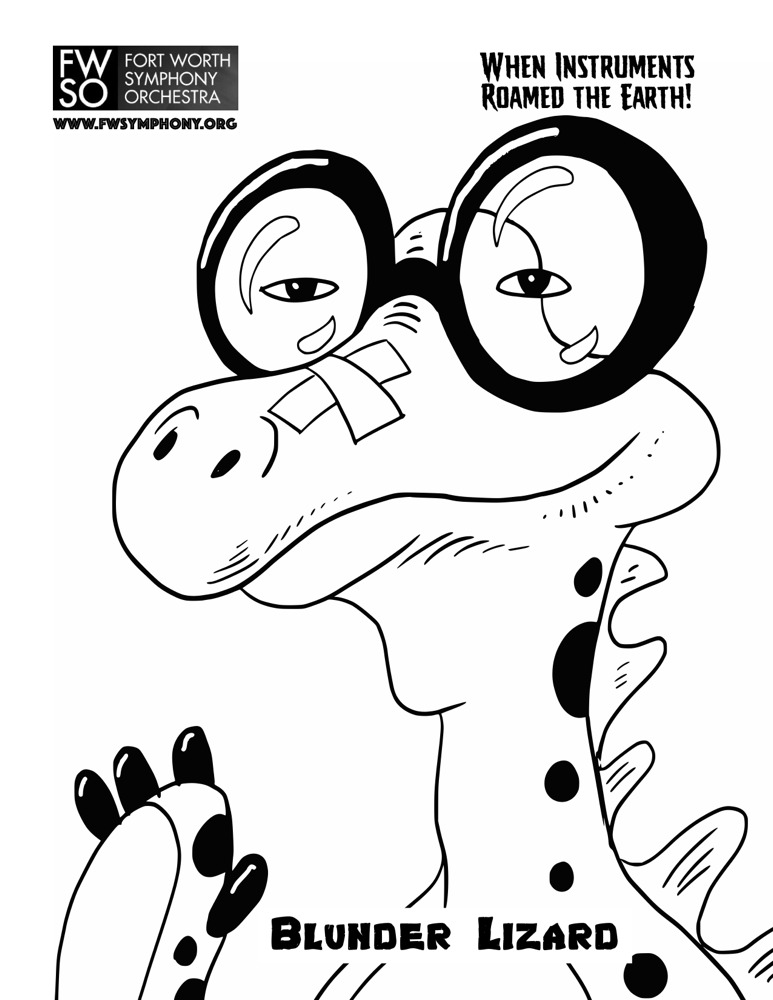
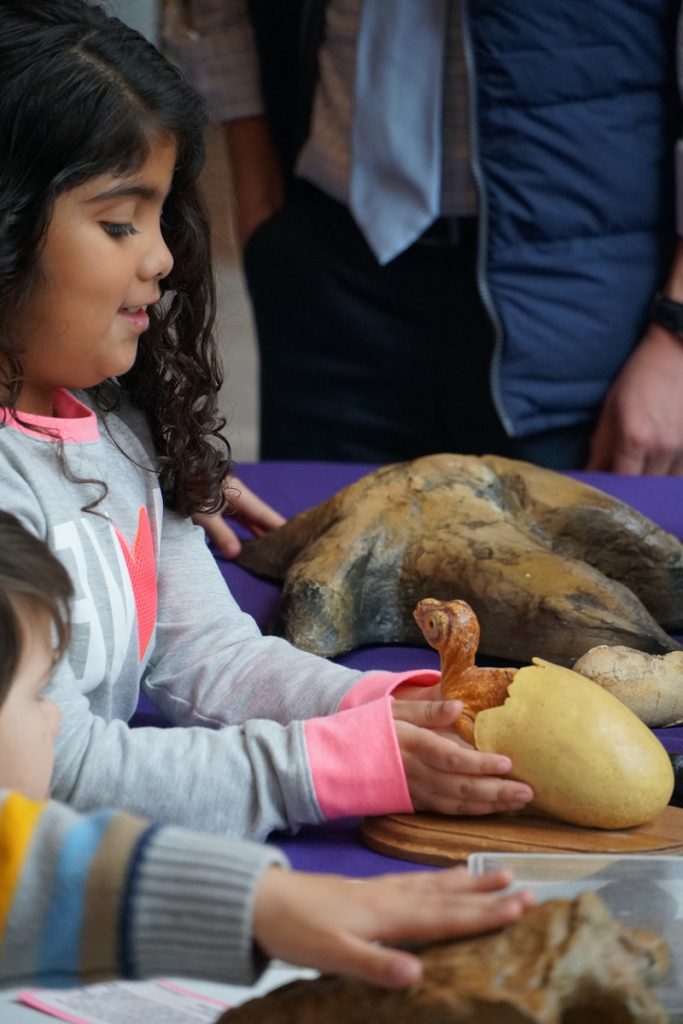
Create complementary lobby co-promotions with sponsors and natural history museums.
Lobby social photo opportunities spread the symphony name and fun by including onstage characters and symphony musicians.
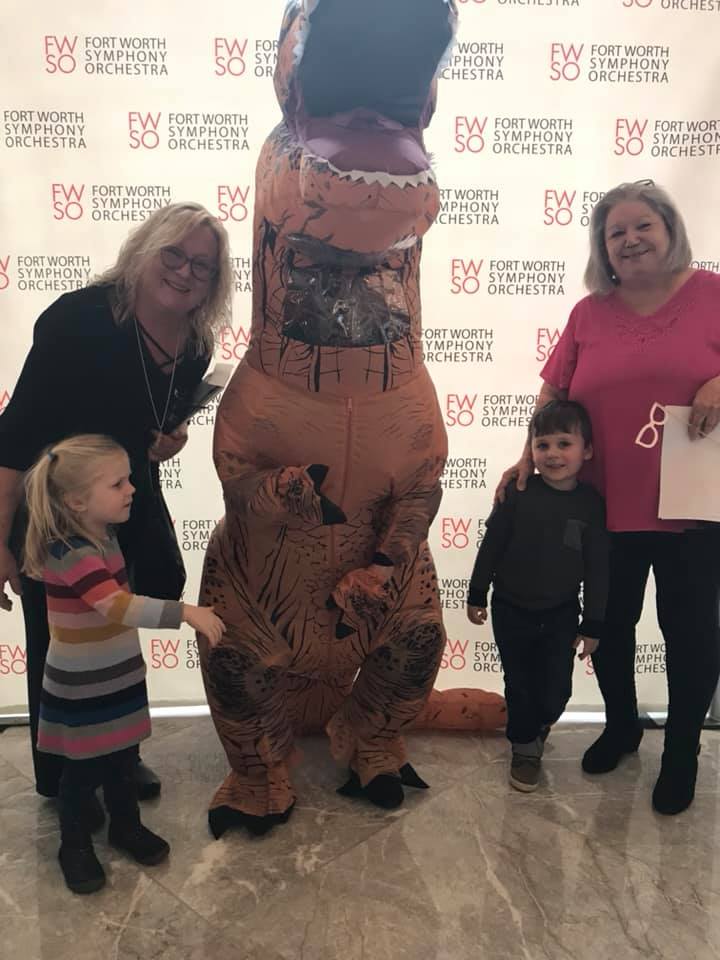
educational values
Families will be thrilled as they experience exciting, age-appropriate sights, sounds, and sensations with the orchestra, making them laugh and want more. Using captivating examples and without lecturing, audiences see, hear, and experience the four sections of the orchestra with eye-and-ear-catching examples by soloists and sections.
The performance uses visually kinetic “choreography” throughout as soloists and sections stand and interact, showcasing dynamics, contrasts, personalities, and the enchanting sounds of the orchestra.
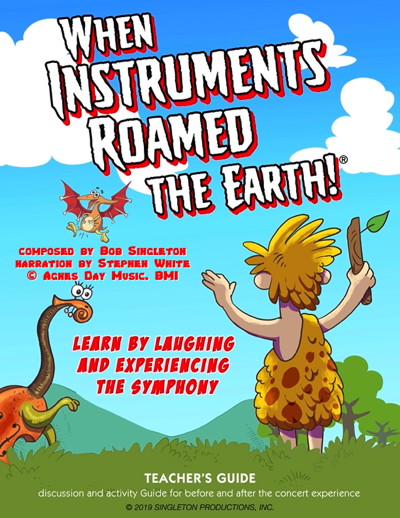
Includes free downloadable Teacher’s Guide with pre-concert and post-concert discussion ideas.
audience survey responses
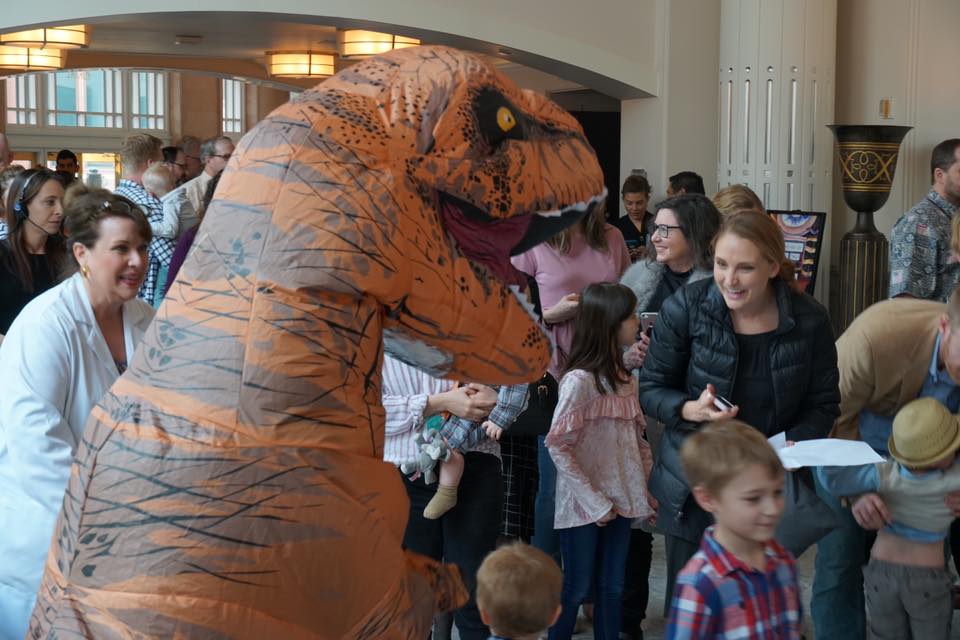
(survey of audience members at world premiere performance):
- “Best of the 3 [family] concerts we attended!”
- “Amazing! The children were so engaged and excited! FANtastic!!!”
- “If this is an example of what the family concert series is about, I’m sold.”
the creative team
“When Instruments Roamed the Earth!®” is created by the award-winning TV writing team of Bob Singleton, composer, and Stephen White, script & story.
Bob Singleton is a classically trained, Grammy®-nominated and multi-platinum album award-winning composer, producer, and arranger. His musical works for kids includes music for over 70 PBS episodes, more than 60 albums, an NBC network special, and a sold-out Radio City Music Hall run. Bob served as the music director for the world-wide children’s phenomenon, “Barney® & Friends” for 10 years, and has been awarded two multi-platinum albums, and nominated for a Grammy® and 4 Dove awards in the Children’s Musical Album of the Year category.
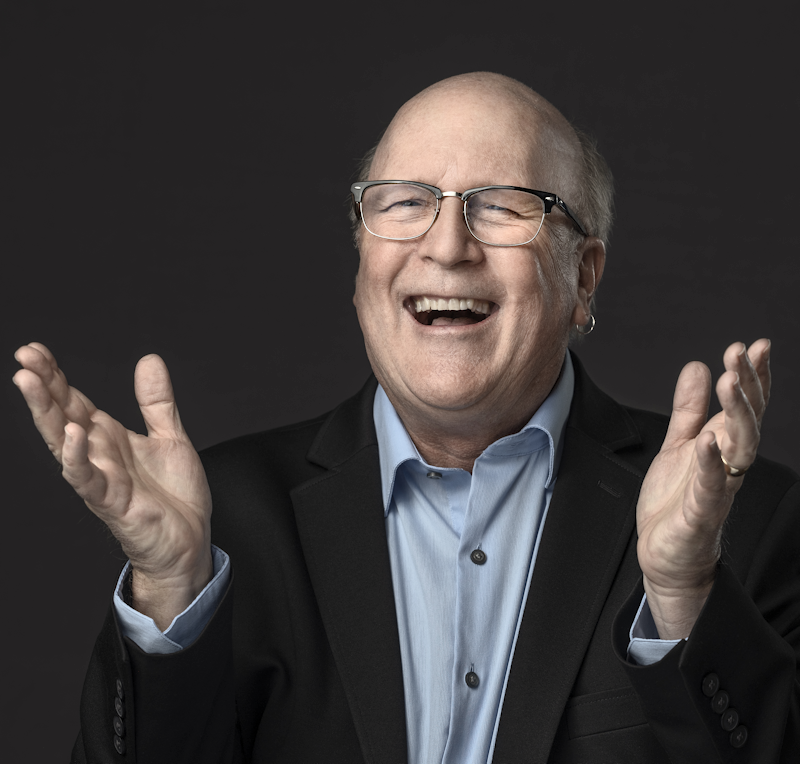
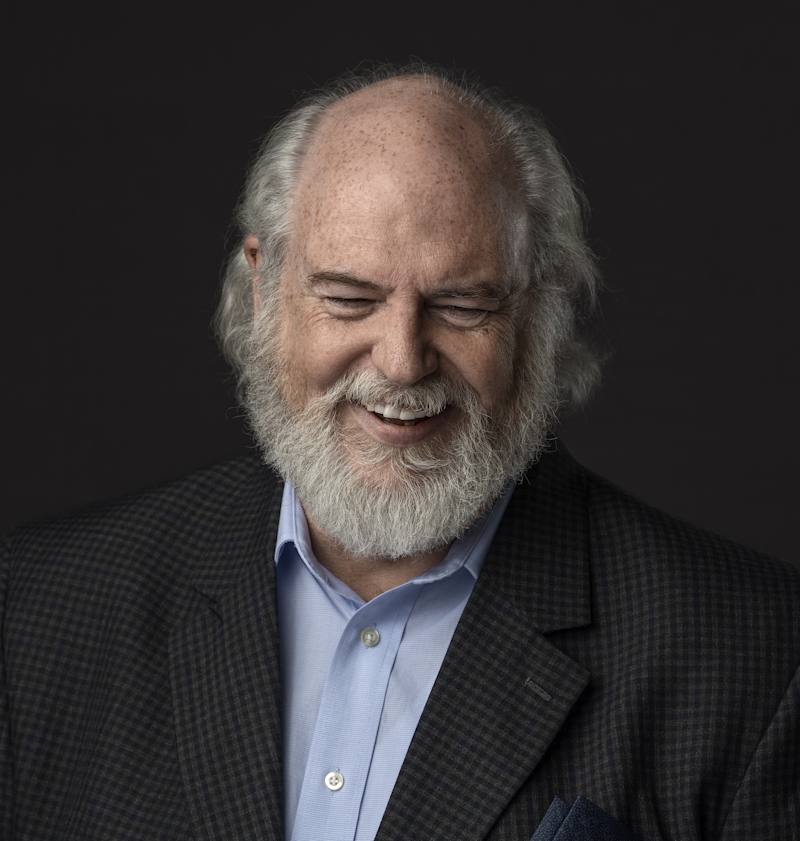
Stephen White is an Emmy and Grammy®-nominated writer, with years of experience writing for television, home videos, stage shows, million-selling children’s books, and film. His credits include Principle Writer for “Barney® & Friends” (16 years), writer for in-store musical extravaganzas for Chuck E. Cheese, lyricist for many award-winning songs and commercials, and children’s app developer/creator of “AlphaBELCH” and “Thumbpire,” which incorporate stories, images, and music for young children.
Max Larin is a busy artist and illustrator for books, magazines, and computer games around the world, while enjoying life in Kiev, Ukraine. He loves watercolor painting and creating imaginative worlds with computer tools.

orchestration
strings:
violins 1
violins 2
violas
violoncello
contrabass
woodwinds:
1 piccolo
2 flutes
2 oboes
2 Bb/A clarinets
2 bassoons
brass:
4 horns in F
3 trumpets
3 trombones
1 tuba
percussion:
1 timpani
3 utility
1 piano (can be digital)
1 harp
projection specifications
Projection content is 42 sequentially numbered 1280×960 pixel .png graphics files. These files must be placed into the projection program of your choice. There is a separate “Slide Advance Script” with cues and instructions. Slides only advance during narration, so operator does not need to read music.
audio specifications
2 voices need microphones: conductor & narrator (voices speak sequentially, never overlap)
Optimum mic/operator spec for voices:
- conductor – your choice of microphone
- narrator – wireless headset mic for narrator to allow gestures and possible entrances/exits
- audio operator to balance volume levels between conductor and narrator, plus mute inactive channels
Minimum mic/operator spec:
- one microphone shared by conductor & narrator, and handed off from conductor to narrator
- boom mic stand for narrator
- mic placement should allow narrator to gesture with hands, and have sightlines for script, orchestra, and graphics
- audio operator to adjust volume and mute mic when necessary
lighting specifications
Optimum lighting:
- full orchestra illumination during music cues
- fixed spot on narrator during narration
- one follow-spot with operator for T. Rex costume character
Suggested pre-programmed lighting looks:
- full orchestra lighting for all music cues
- narrator on side of stage with fixed spot and orchestra lights down, allowing visibility of projection on screen and drawing attention to narrator.
- for final music cue, manned follow spot on T. Rex plus full orchestra
Minimum Lighting:
- orchestra illumination with pre-lit narrator and conductor.
- allow enough down-stage spill to light the “guest conductor” in a T-Rex suit who will enter and position in front of conductor riser to do physical schtick during music Cue 10.
- anticipated area of T-Rex movements is up to 20 feet left and right of the conductor riser.
staging considerations
- One music stand for narrator script; placed on either stage left or right of orchestra, not at center. Short exit path off-stage or stepping out of sight for narrator is a plus during music cues. Narrator does not require a seat onstage.
- T-Rex suit is 7’ tall, and the tail is nearly 3 feet long. Person in T-Rex suit will have very limited visibility. They should have an area of sufficient size near the stage to put on and inflate the suit. It is recommended that there are no stairs or obstacles on path to stage.
- T-Rex should have a straight, unhindered path to front and center of stage from wings.
- A backstage and lobby event wrangler for the character should be provided.
- T-Rex character will need at least 6’ of space between orchestra and lip of stage, plus 20’ left and right of conductor riser to perform during final music cue.
post-concert meet & greet/social media stations in lobby
Pre-plan social photo stations with line wranglers and courtesy photo-takers for 2 characters. Any additional meet & greet such as conductor and musicians is a bonus.
Announcing “When Instruments Roamed the Earth!®” vs. 2.0
“When Instruments Roamed the Earth!®” was premiered by the Fort Worth Symphony Orchestra in Bass Performance Hall under conductor Alejandro Gómez Guillén in February 2019.
What do you do after you’ve had a triumphant world premiere of a new type of family concert, by a world-class symphony orchestra, in a revered symphony hall?
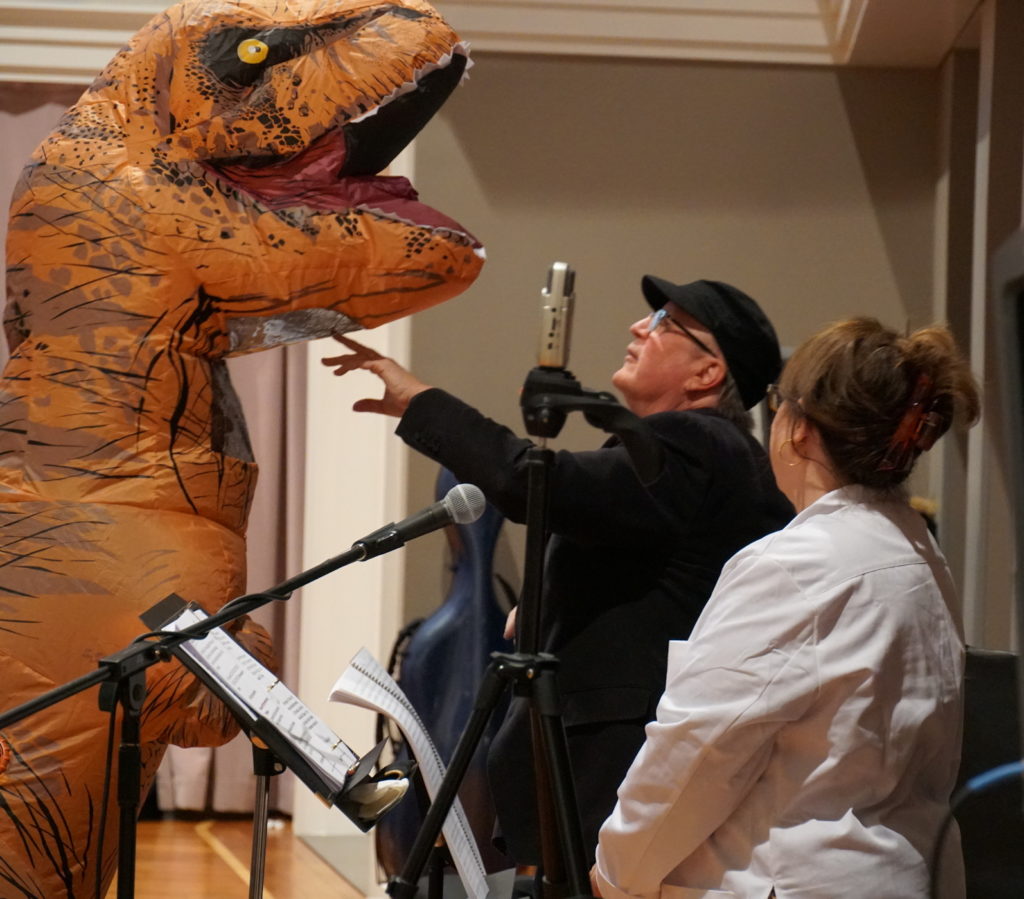
You make it better.
During all the read-throughs, rehearsals and the performance of, “When Instruments Roamed the Earth!®” copious notes were taken, musicians were queried, conductors were questioned, and audience members, production staff and characters were surveyed; all to find out, “how can we make this better?”
We found out. Then, we went to work on version 2.0.
“When Instruments Roamed the Earth!®” version 2.0 includes:
- a big laugh that was added earlier in the narration to get the fun started sooner and larger
- revamped orchestration, reworked in key areas
- all scores and parts were totally re-engraved using a unified “house style,” with fresh paginations, layouts, instructions, and markings for quicker rehearsals and better performances
- the title change was rolled out to all scripts, scores, parts, graphics, and promotional elements (“When Instruments Roamed the Earth!®” was originally titled “Jurassic Parts.” Questions about that? Funny story. Ask us.)
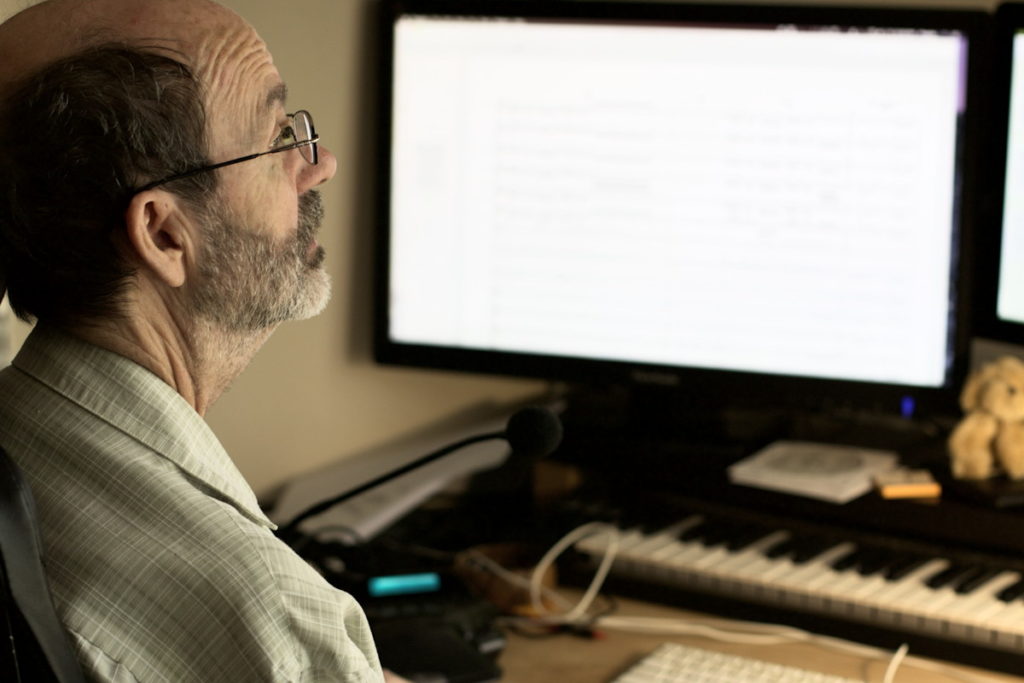
And, because of an anonymous benefactor for a limited time, there’s no reason any symphony in the US can’t perform this new, improved, audience-pleasing, donor-friendly symphonic event.
Contact Bob Singleton now for more information: wheninstrumentsroamed@gmail.com
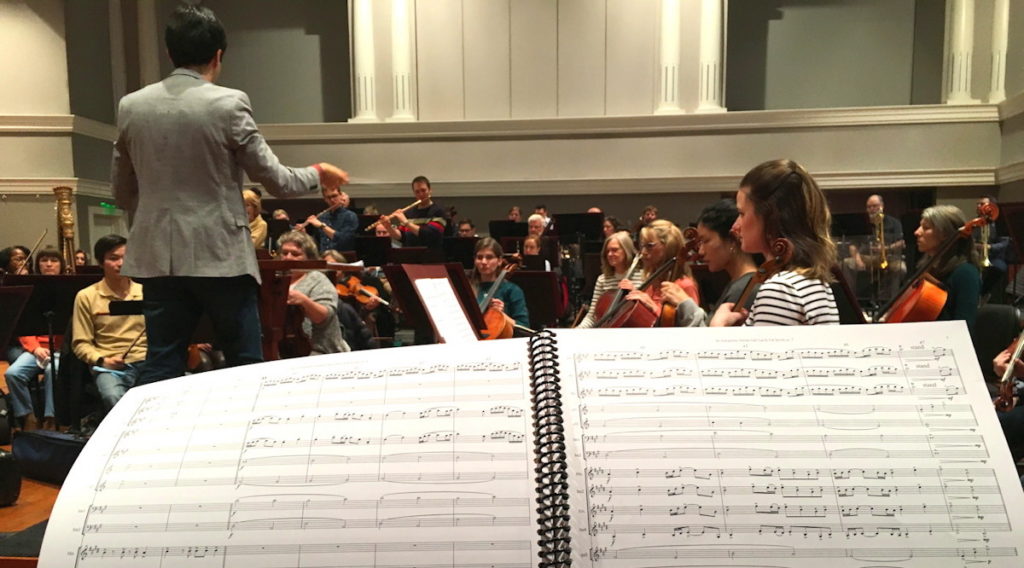
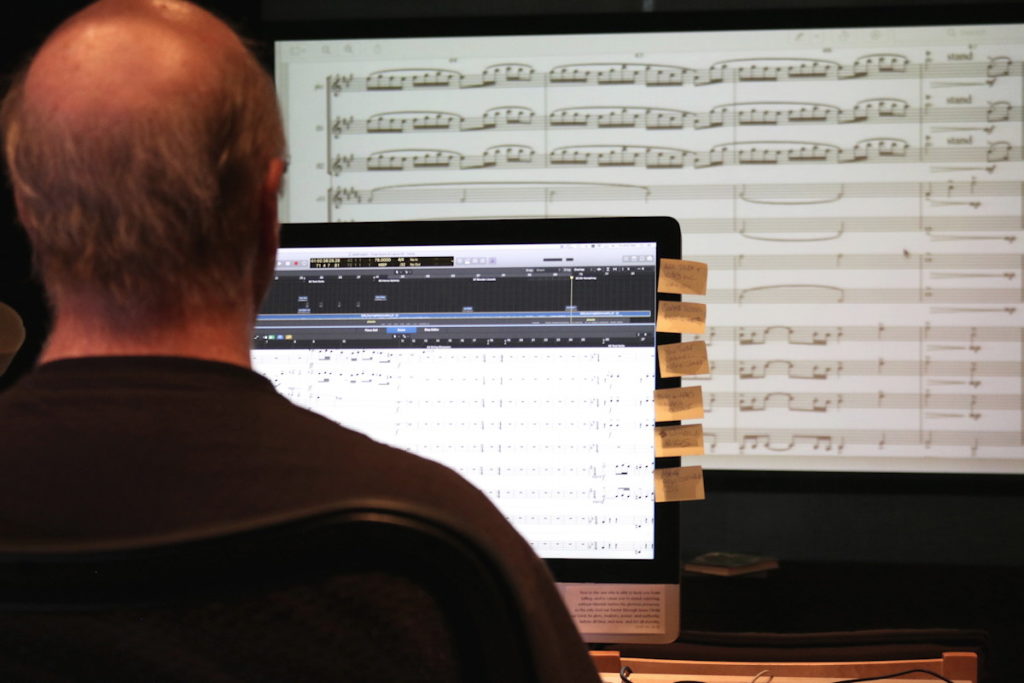
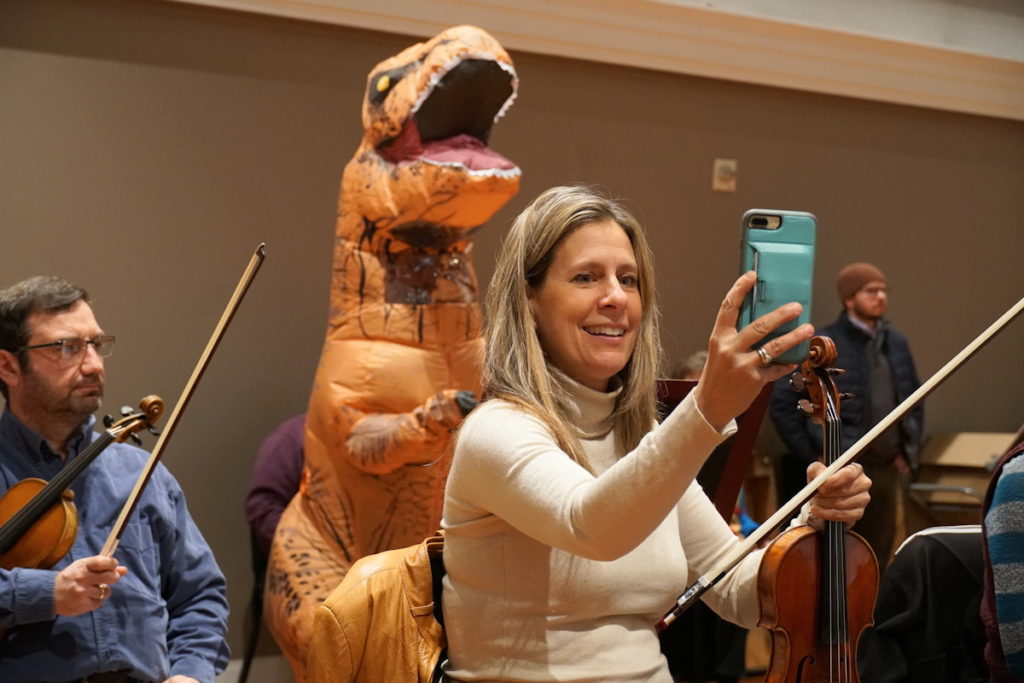
The Fort Worth Symphony Orchestra, the commissioning orchestra, talks about the world premiere of “When Instruments Roamed the Earth!®” (formerly “Jurassic Parts”)
short professional observations by the people who presented it
There are a lot of moving parts associated with any symphony performance. These key professionals answered 2 questions:
- What would you tell someone in your role at another symphony organization about “When Instruments Roamed the Earth!®” (formerly known as “Jurassic Parts” at the world premiere)
- What would you tell a family friend who is considering attending the concert?
“When Instruments Roamed the Earth!®” (formerly “Jurassic Parts”) – An Original FWSO Family Series Performance
Musicians of the Fort Worth Symphony Orchestra newsletter
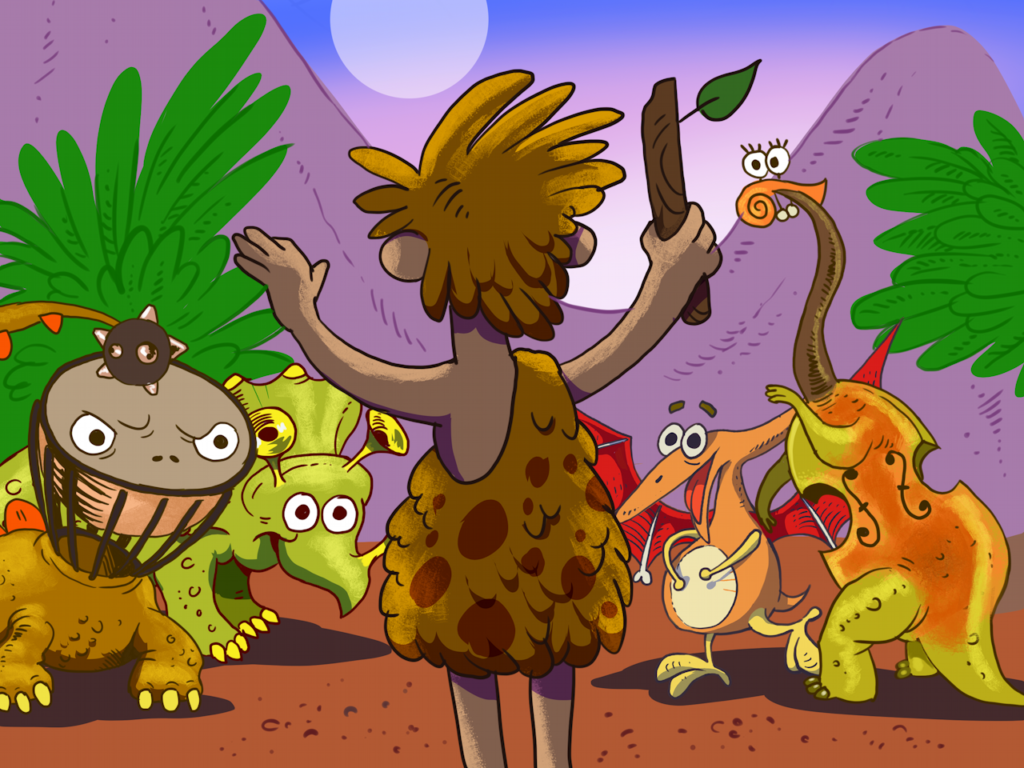
Interview by Tanya Smith, violin FWSO, as it appeared in the January, 2019 edition of the newsletter for Musicians of the Fort Worth Symphony Orchestra (link to original newsletter)
At the beginning of February, the FWSO will give the world premiere of the piece, “Jurassic Parts,” as the last installment of the Family Series concerts. It is written by local Grammy-award nominated composer Bob Singleton, whose music you may have heard on Barney the Dinosaur® as he was the music director for that series for ten years. It has nothing to do with the scary “Jurassic Park” movies and is instead a hilarious romp through the orchestra through means of some musical dinosaurs. Bob was kind enough to answer some questions I had about the piece. We hope to see you and all the children you know at the performance!
Tickets and more information about this concert can be found here.
How did this piece come about?
I have the most fun in life creating music. Creating music for kids ramps up the fun and the difficulties at the same time. Kids are brilliant, complicated, inquisitive, and have no pretense. It’s extremely challenging, and extremely gratifying when it works.
It was a natural thing for me to want to create something for kids and the symphony, and the idea of what that would look like has been bouncing around in my head for years. The challenge is huge to make something that kids will think is “lit,” and that my symphony friends will appreciate and enjoy performing.
Did you come up with the story?
My writer-collaborator for the story and narration is my good friend, Steve White. Steve is an Emmy-nominated writer who I met while we worked together on Barney the Dinosaur. He has an incredible kid-sensibility, and is one of the funniest people I’ve ever known. He carried the load on the story. He and I had several brain-storming sessions over Tex-Mex and junk food to come up with ideas that would fit into the template of a kids & family orchestra concert.
What about the illustrations?
I hired a terrifically talented artist, Max Larin, to create the visuals for the concert. Max lives in Ukraine, and has illustrated books, interactive games, and animated projects in a variety of styles. We worked with him on creating a unified style for the concert, and then sent Max descriptions for each graphic that corresponded to events in the narration.
How long did it take to compose this work?
It took me 2 months of composing while collaborating on the script and the art. It’s taken much longer to take what’s in my brain and put it into the score and parts that the orchestra will be reading at the concert.
Who is the target audience?
As a matter of fact, I kept my grandson, Quinn Leach, from Katy, Texas, in mind as my quality control throughout the composing and production process. I was constantly thinking, Will this keep his attention? Will the story make him laugh? Are the pictures memorable and descriptive for him? What will he tell his friends about after the concert?
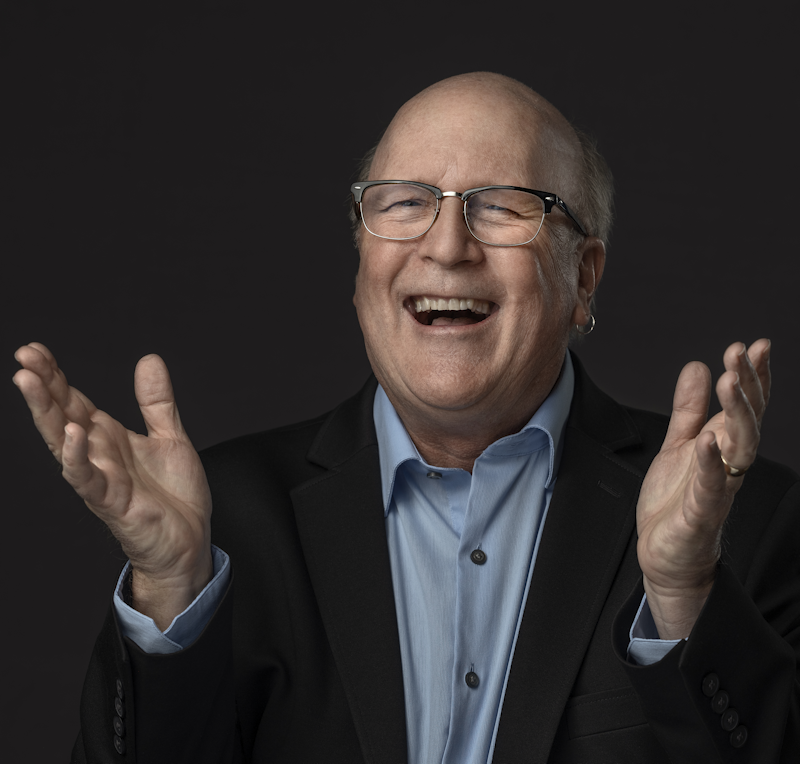
What do you hope children will enjoy learning during this performance?
I want kids and families to fall in love with the people, the sound, and the experience of a symphony concert. That’s it.
In this concert, I include a funny story, interesting characters, and kid-friendly graphics that bridge and support the musical moments. When the orchestra plays, the musicians are the stars. The music, story, graphics and humor are my tools to connect the orchestra and the kids, and light their inquisitive brains on fire for music and their life with music. They will learn about the sections of the orchestra, They will see and hear soloists, sections, idiomatic techniques, and so much more. They will discover how those amazing sounds they have heard in movie scores are actually made by real people. They will be absorbing all that information and storing it because they will be experiencing it with their eyes, ears, bodies and brains. It’s how they learn best.
I want kids to leave and tell their friends how awesome it was. I want them to see the individuals in the orchestra as mega-talented, but very real people, not as motionless cogs behind the black wall of the front row of players. I want them to laugh, say “wow,” and point to individual players and sections and say, “I want to be like them!”
Kids are aspirational – they want to be like somebody else. They want heroes. They don’t want to be the Dallas Cowboys; they want to be Dak Prescott. In the same way, they don’t want to be the Fort Worth Symphony; they want to be Michael Shih, or Pam Adams, or Kyle Sherman, or Deborah Mashburn.
Kids at this age don’t want to be told what they are supposed to learn. They want to discover it themselves. This program is designed to give them a 40 minute discovery journey of sights, sounds, and people that will make them want to come back for more. And, it’s all done with lots of humor, and zero “preachy-teachy” moments.
****end****
If Barney the Dinosaur® Were Growing Your Orchestra’s Audience, Here’s What He’d Do.
Kids, Concerts, and Cultivating Crowds
A manifesto for building orchestra audiences
by Bob Singleton
I’m a classically trained composer and producer, who has written for orchestras, recordings, commercials, TV, and movies. My information about kids comes from being privy to research during my years as music director for one of the most popular music-driven properties in the history of kids programming on PBS, Barney the Dinosaur®.
I heard and participated in discussions of research about kids, toddlers through teens, that provide a template to capture and enchant kids and families. I’ve seen that research bear fruit with several projects.
I’m going to share how it will work for the music and people that I love, the symphony orchestra.
A kid goes to his first orchestra concert. As the orchestra takes its first long, quiet pause, the kid turns to his mother and asks, “Why is it called a movement, if they just sit there?”
Orchestras everywhere are trying to capture new audiences, and kids and families are among the most coveted sources for new audiences. Organizations of all kinds that deftly connect with kids and families, know it happens by knowing who kids are, and when and how to capture them. Experienced marketers also know that when they capture a kid at the right age, they are connecting with the whole family’s interests and purchasing power–often for a lifetime.
Paraphrasing a quote attributed to everyone from Oprah Winfrey to Spongebob; after attending an orchestra concert, kids may not remember a note that was played, they may briefly remember something that was said, but they will always remember how they felt. The best organizations make certain that kids feel enchanted by what they experience.
Kids, life, and music
Kids breathe music from birth. Kids connect with music to develop language, structure, intellect, and more. Music, for kids, is at its most captivating when it is connected with human interaction–and music and human interaction is at the core of every live orchestra experience.
The best age to capture kids for the symphony is roughly ages 6 to 10. Kids this age are intellectually and developmentally prepared to be affected by a life-changing experience at the symphony.
At this impressionable age, kids aren’t locked into a musical identity. They are aspirational and seek heroes. They connect with individuals, not institutions. They access information using all their senses and experience life with all senses simultaneously. They are endlessly curious. They want to see and experience. They don’t want you to tell them, they want to discover for themselves. And, they want to laugh. They really want to laugh. A lot.
This age can be summed up in two words: discover, and laugh. Hit the mark on those two concepts with kids this age, and you’ve captured your new audience, and importantly, their families with them.
First impressions
Kids want to have fun, yet orchestras often feel most comfortable dishing out information, not feeding out fun. When that happens, nobody wins. If orchestras offer a serving of uninspiring educational vegetables for a kid’s first experience, they lose their only “first chance” with that kid.
Kids must first be thrilled. Early orchestra experiences should be a 9-year-old’s dream: exciting, filled with age-appropriate sights, sounds, and sensations that make them laugh and want more.
Igor Stravinsky is credited with saying, “I haven’t understood a bar of music in my life, but I have felt it.” Kids are the same. Let kids feel the experience. Don’t explain it to them.
A kids and family concert will be different from a “grown-up’s” concert. Embrace the difference. The virtuoso music of the masters isn’t required in your kids concerts. What’s required is music that creates an extraordinary, kid-capturing multi-sensory experience, full of sights, sounds, and sensations. The music is part of the entire experience, and it should be packed with dynamic fun, delivered with humor and activity. Once kids have their first “wow” experience, they will be ready to explore the depth and range of the orchestra. They will be hooked.
That first experience should not be a quiet classroom in a concert hall. It should look like kids–with wiggles, heads on a swivel, bouncing, and chatter. The object is to channel that kid-energy into a love for the orchestra, not chain it to a seat.
Kids require a multi-sensory experience. Boldly present visuals, seat-shaking sensations, and the full dynamics and textures of the orchestra. Make the most of projection, plus, let them see and connect to your conductor, the musicians, and their instruments. Give them lots of “in-the-seat” opportunities to interact, with applause, shouts, rhythm, and laughter.
A kids and family concert will be free of rules and full of stimulus. It will be kinetic and dynamic; visually, aurally, and experientially. It won’t be a slow dramatic arch of theme, development, and long periods of repose. It will be a series of heroic moments with people, images, sounds, and humor. Kids should leave feeling a sense of “wow,” wanting to tell their friends how it was so cool.
It’s imperative to engage kids in fun and laughter. Laughter is a visceral, whole-body bonding experience for kids. Ignore belly-laughs and fun with kids this age at your peril.
Plan it
When planning your kids and family concert, keep it under 50 minutes, and follow these guidelines:
- Start with a “wow” opening.
- Create kinetic action within the orchestra. Break the wall of the first row of musicians by having sections and soloists frequently stand and sit for action and visibility.
- Showcase individuals, instruments, and dynamics with “heroic moments” that feature soloists and sections.
- Add kid-friendly projections with pictures and little-to-no text.
- Mix music and dialog in alternating, quick doses. Dialog must be age-appropriate and include large amounts of elementary-age humor.
- Include “in-the-seat” interaction–clapping, laughing, cheering, and call-and-response.
- Create concert titles, subjects, ideas, or characters that connect with kids.
- Don’t depend on performing “familiar” concert works. It’s possible that all orchestral repertoire is unfamiliar to your audience. Connect using fun, interesting sounds and textures, and compelling sights.
- Let your audience learn by observation, not by lecture.
- End with a big, noisy, fun, grand finale, and no talking or lecturing. Leave the audience cheering, laughing, and wanting more.
Include pre-and-post concert lobby multi-sensory experiences that connect with the program. Create development opportunities with businesses and organizations that also want to reach kids and families.
Be bold
Go, capture, and build your new audience. Reach out every season. After you “wow” and captivate your new audience of life-long orchestra lovers, the opening joke in this article could be followed with this:
A kid goes to his second orchestra concert. As the orchestra takes its first long, quiet pause, he turns to his mother and says, “I prefer the atonal, aleatoric intricacies of post-modernism.”
OK–maybe not. Wow them first, then take them on a life-journey with the people and music of your orchestra.
***
Bob Singleton is a Grammy® and Dove nominated composer and producer of music for all ages. He has arranged and produced two RIAA Certified Platinum award albums, and had music in the triple Academy Award nominated movie, “In America,” in addition many other projects for network TV and international distribution.
His kids and family concert for symphony orchestra, narrator and projected graphics, “When Instruments Roamed the Earth!®” was premiered by the Fort Worth Symphony Orchestra at Bass Hall in their 2018-2019 season. He can be contacted at bobs@singletonproductions.com.
